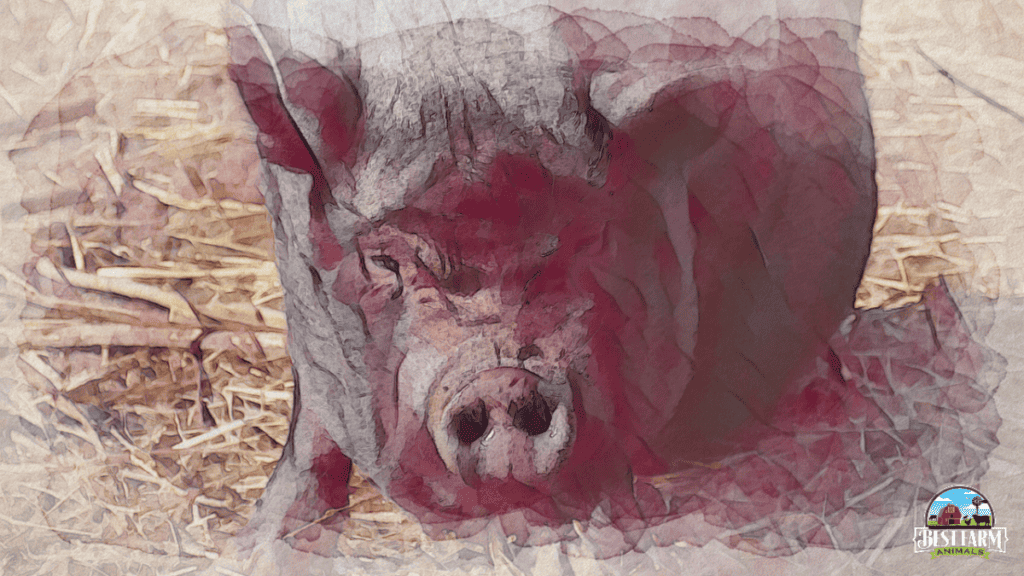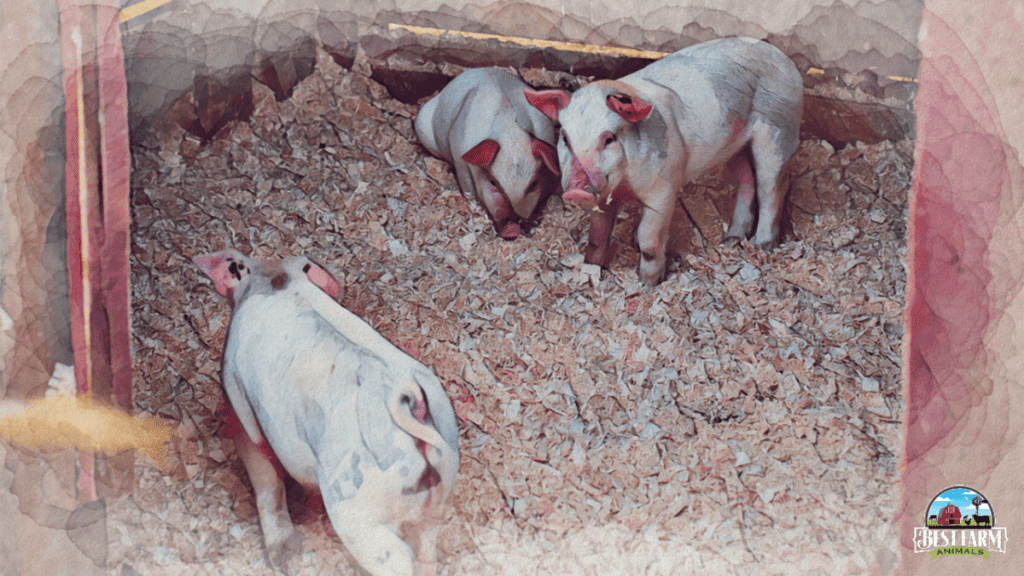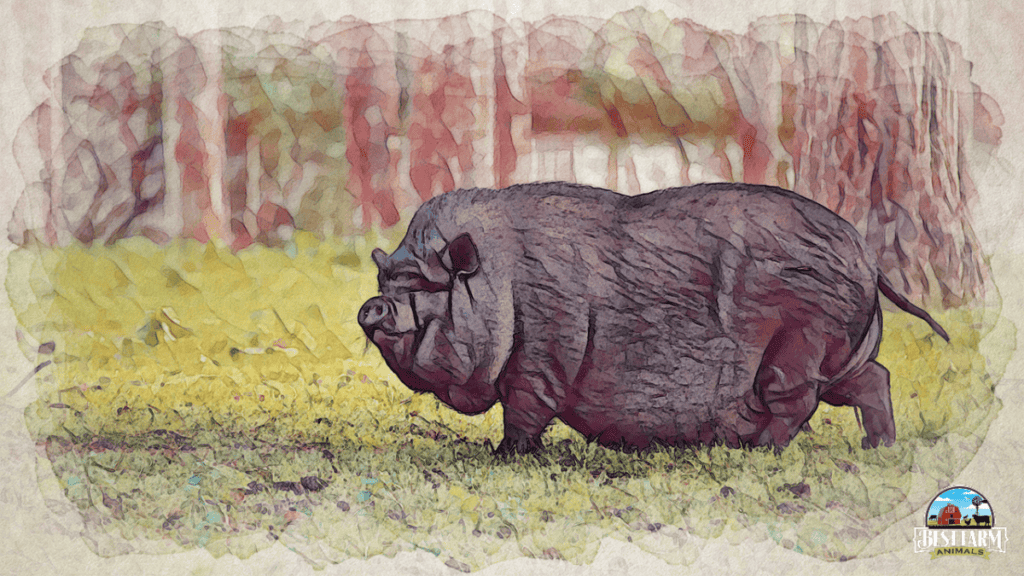As I looked out over my farm one morning, my eyes couldn’t help but settle on the mischievous pigs that had stolen my heart over the years. The sight of their trotting tails and distinct grunts was enough to put a smile on my face, no matter how stressful my day was.
My pigs are part of my family. They are also part of a hard-won education in the realities of pig ownership – lessons that I believe potential pig parents need to hear.
While pigs charm with their intelligence and empathy, owning them is a serious commitment. It demands time, space, patience, and resources. They’re not for everyone; pig ownership goes beyond feeding and petting, requiring careful consideration.
Table of Contents
Problems With Pet Pigs: Indoors or Outdoors
Pet pig owners all over the world praise the intelligence and joy of having pigs. But, there are also some cons to owning a pig as a pet. Let’s cover some of the difficulties of having a pig as a pet. Many of these negatives can be overcome if you provide the right environment for your pig.

Pig Pets Grow Large- Up To 1,000 Pounds
Pigs grow very large. The average adult pig will grow to 800-1000 pounds. “Miniature pigs” are bred to be smaller. They typically reach a size of about 200-300 lbs as an adult.
If you purchase a “teacup” or “miniature” breed of pigs, it’s important to know that even these pigs will grow much larger before they are finished. We’ll cover teacup pigs later in this article. Even “teacup” pigs can grow to 200 lbs
A 200 lbs hog in the house can cause a lot more damage than a piglet. It can make a difference in how quickly your flooring, furniture, and belongings wear out and break.
A 200 lbs pig won’t look as big as a 200 lb dog because pigs are so dense. But, it is still a lot of weight to move if you need to force your pig to an area against its will.
Lastly,
Consider the size of a pig if you have kids in the house and want an indoor pig.
Pet Pig Gets Easily Bored If It’s Inside
Pigs are intelligent, but that also means that they can get easily bored. Pigs need to be busy or they can cause a lot of damage. If you are planning on having an indoor pig, you will need to do more pig-proofing that a toddler would require.
Pigs can open the refrigerator, they can open drawers and get into mischief. They can get into clothes, food, and tear into food packages. There is endless trouble they can cause if they are bored.

Pet Pigs Acquire Spoiled Pig Syndrome And Show Dominance
Spoiled piglets will grow up to be aggressive pigs. Piglets need daily, consistent training to respect all humans as being above them in the hierarchy. This can be difficult to train if you have children in the home because of their smaller size.
Pigs have a very strong pecking order. They are very dominant. Withing a team of pigs, they will shuffle for the position as the dominant pig.
In a situation where pigs are heavily involved with people, they will often exert aggressive behavior against people. This tends to happen a lot more when pigs are indoor animals. This potbellied pig was sold as a teacup pig, but will likely reach 200 lbs
They see the house as their territory and can be very aggressive to visitors or other unfamiliar people. The best way to curb this response in pigs is to train them firmly from the time that they are piglets.

Pigs Have Strong Rooting Instinct And Can Be Aggressive
Pigs are superb rooters. They love to dig in the dirt and are fabulous at digging out the roots of plants to eat. It’s one of those instincts that helps them to survive in the wild. Their rooting instinct can be curbed, but never completely disappears.
Explain the meaning when pigs root at you and why it can be linked to aggressiveness
Apart from rooting to look for food, pigs also root to cool their bodies, communicate, or for comfort. Rooting is their natural behavior that starts immediately after birth and continues into adulthood.
Rooting is their mode of communication. For example, when a pig gently roots at you, it may mean they are hungry and are asking for food. If you fail to respond, the rooting may become more brutal and can result in bruises. That means the more you ignore the pig, the more aggressive she becomes. Sometimes the pigs may root at your hands if they need a belly rub, especially if they feel neglected.
If you have intact pigs (not neutered or spayed), they can root your legs aggressively to express their sexual frustrations, leading to biting and humping. And if you don’t meet all their needs and keep them confined in the house, they may root your laminate flooring, and other household items, which can be very destructive.
Frustrations can cause pigs to root in potted plants, attempt to dig in carpets and be a source of boredom when they aren’t able to root.
There are reasons why pigs should be allowed to root: the action can help benefit their health and well-being in different ways:
- Keeps Them Cool – Pigs are known for their fascinating inability to sweat, but that does not mean they never get hot. Pigs have a complex process of regulating their temperature, and rooting allows them to create cool holes in the dirt to lie in. On top of that, the dirt and mud that ends up covering them, as a result, offers protection against the sun’s rays.
- Keeps Them Active – Rooting is a common form of exercise for many pigs, so allowing your own pet to root will help it stay active.
- Helps Them Acquire Nutrients – Dirt contains minerals such as iron; allowing your pig to root in dirt gives them access to these minerals.
Many indoor pig pet owners will create a rooting space–such as a box, pen/fenced area, or tent–in a non-carpeted area for their pig so they can avoid damage to their floors or couch cushions.
If you plan on taking your pig outside to use the bathroom, use these opportunities to allow them to root outdoors in their natural habitat for a little while. If you have a decent-sized backyard, you can also set up a pen outdoors as well. (The extra exercise outside can benefit them!)

Pigs As Pets Are Omnivores So They Eat Everything
Pigs eat both herbivores and carnivores. They will eat meat and vegetation. This can be a good thing because a pig will eat nearly any table scraps.
But, on occasion, it can also mean that pigs become aggressive to their human owners. There are multiple instances, though rare, of pigs attacking and biting or attempting to eat a person.
This isn’t meant to scare from having pet pigs, but it’s important to be aware of it, especially if you have children or smaller pets already.
Pets Pigs Can Be Expensive
The cost of owning any pet can be high, depending on the individual animal. But, consider some of the needs of your pig and how you plan to meet those needs. Will you be paying a vet to care for your pig, or do you have the resources and knowledge to do it yourself?
Consider some of the following needs, which will be covered later in the article in more depth.
- Will you trim your pig’s hooves yourself or pay someone to do it?
- Will you maintain it’s medicine and deworming or will you need a vet to do it?
- Will you need to purchase supplies for it such as a house, kennel, pigpen, or another encasement so it doesn’t tear up your yard?
- If it’s going to be an indoor pet, what kind of super-pig proofing will you need to do?
- Will you get it neutered or put up with it’s “loving” actions toward you and your other animals?
- Can you afford to pay for the “accidents” of broken household items, ruined clothes, and spilled food?
These are all costs to consider before you get a pig. Some of these costs won’t be an issue if you are planning to have an outside pet pig, while others may be necessary regardless of which kind of pet you have.
Pet Pig Can Be Noisy Indoors
One thing new piglet owners should be warned of is their noise. Piglets will squeal very loudly for their food, especially when hungry.
Do not discipline your piglet if it is disruptive; this is just its natural instinct. To prevent it from happening in the first place, provide food at optimal times of the day, ideally in the morning and evening.
My Most Used Pig Supplies
This list contains affiliate products. Affiliate products do not cost more but helps to support BestFarmAnimals and our goal to provide farm animal owners with accurate and helpful information.
Purina Pig Chow will last well (or Mazuri is popular, but I haven’t tried it), and the stainless steel non-skid bowls that will help keep the mess down.
A pig blanket to keep her warm. This one also has bright colors and helps to provide rooting without the destruction.
Pig Harness for walking and handling your pig. There are a lot to choose from, but this one is pretty easy to use. If you want one that has a separate leash, this looks like a good one.
A large crate for keeping her safe in your house at night and when you leave the house. This is essential. You’ll also want a litterbox, and I like mine with a lid for nighttime. Pine shavings are best, and you may be able to find them in larger quantities locally.
When you have accidents, Odoban will help eliminate odors. When you are potty training, these floor pads work great for keeping your house clean while training her to go in certain places.
You’ll also want an outdoor house to keep her warm when she gets outside time, an essential part of her development.
Dewormer- Ivermectin is the primary dewormer I use, although I do rotate with a non-ivermect ingredient once so that the worms don’t get immune to it.

